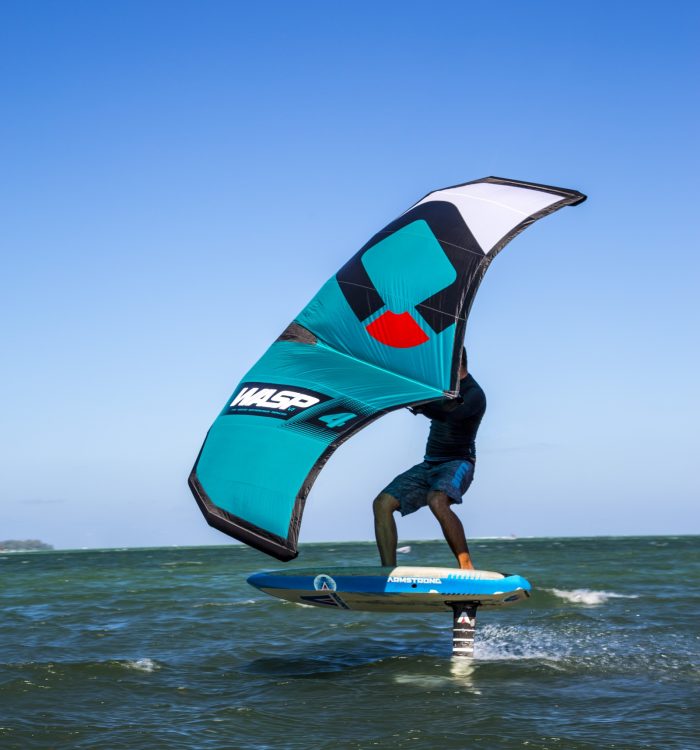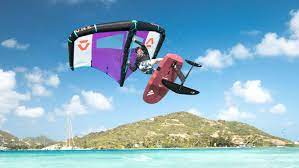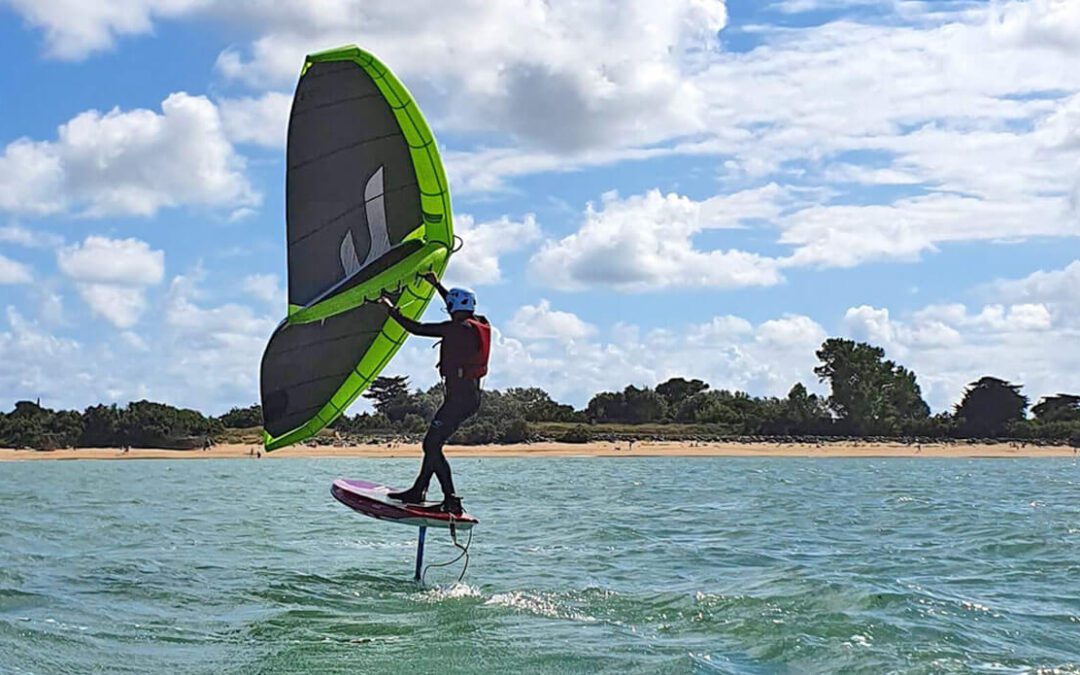Wingfoil for Beginners: Mastering the Art of Gliding on the Water
Welcome to our exciting and comprehensive guide to wingfoil for beginners! If you’re new to the world of wingfoil and looking to embark on an adventure that combines the thrill of flying with the freedom of gliding on the water, you’ve come to the right place. In this article, we will dive deep into the techniques, gear, tips, and spots that will help you master wingfoil as a beginner. Get ready to elevate your water sports experience to new heights!
Learn wing foiling in Sri Lanka with Margarita´s team!
Understanding the Basics of Wingfoil
Before we dive into the techniques and gear, let’s start by understanding the fundamentals of wingfoil. Wingfoil combines elements of windsurfing, kiteboarding, and hydrofoil technology to create a unique and exhilarating water sport. By utilizing a handheld wing and a hydrofoil-equipped board, you can harness the power of the wind and glide above the water’s surface with minimal resistance. This combination of wind and hydrofoil creates a magical sensation of flight and allows you to explore new horizons in water sports.
Learning Wingfoil Techniques for Beginners
As a beginner, learning the proper techniques is crucial for a safe and enjoyable wingfoil experience. Here are some essential techniques to master:
1. Wing Handling: Understanding how to handle the wing is fundamental. Learn the proper grip, body positioning, and wing angle adjustments to maximize your control and power.
2. Board Balance: Achieving a stable and balanced stance on the board is key. Practice finding your center of gravity, distributing weight evenly, and maintaining stability in various wind conditions.
3. Starting and Stopping: Discover the techniques for launching yourself onto the water and safely coming to a stop. Learn how to position the wing, adjust your body weight, and maintain control throughout the process.
4. Steering and Carving: Explore the art of steering and carving with your wingfoil. Master the techniques of shifting your weight, adjusting the wing angle, and using your body movements to initiate smooth turns and carve gracefully through the water.
5. Safety and Etiquette: Understanding safety guidelines and water etiquette is essential for your well-being and the enjoyment of others. Learn about right of way rules, communication signals, and how to navigate different water conditions to ensure a safe and respectful wingfoil experience.

Choosing the Right Wingfoil Gear for Beginners
Selecting the appropriate gear is crucial for your progression and enjoyment as a beginner in wingfoil. Here are some key factors to consider when choosing your gear:
1.Wing Selection: Opt for a wing size that matches your body weight, skill level, and wind conditions. A smaller wing is typically easier to handle for beginners, providing better control and maneuverability.
2.Board Selection: Look for a stable and user-friendly wingfoil board that offers good flotation and easy maneuverability. A wider and more buoyant board will provide added stability and confidence for beginners.
3. Foil Selection: Consider a foil with a larger surface area and lower aspect ratio, as it will provide better stability and early lift for beginners. A forgiving foil design will help you progress smoothly without sacrificing control.
4. Safety Equipment: Prioritize safety by investing in a quality helmet, impact vest, and appropriate flotation devices. These items will ensure your safety and provide peace of mind during your wingfoil sessions.
Best Wingfoil Spots for Beginners
Finding the right location to practice wingfoil as a beginner can greatly enhance your learning experience. Here are some factors to consider when seeking the best spots:
1. Calm Waters: Look for spots with calm and flat water conditions, as they provide a more stable and predictable environment for beginners to practice their skills.
2. Sufficient Space: Choose spots with ample room to maneuver and practice without obstructions or crowded areas. Having a wide and open space will allow you to focus on improving your technique without unnecessary distractions.
3. Beginner-Friendly Wind Conditions: Seek spots with consistent and moderate wind patterns. Avoid spots with strong gusts or unpredictable wind directions, as they can make learning more challenging and potentially dangerous.
4. Local Knowledge: Tap into local resources and connect with the wingfoil community to gather information about the best spots for beginners. Local knowledge can provide valuable insights into wind patterns, water conditions, and any specific considerations for your chosen location.

Wingfoil Lessons for Beginners
While it’s possible to learn wingfoil on your own, taking lessons from a qualified instructor can greatly accelerate your progress and ensure you develop proper technique and safety awareness. Here’s why wingfoil lessons are beneficial for beginners:
1. Professional Guidance: Certified instructors have the expertise and experience to teach you the correct techniques, safety protocols, and progression strategies. They can provide personalized feedback and adjustments to help you improve faster.
2. Safety First: Wingfoiling involves risks, and understanding safety measures is crucial. Lessons will teach you about launching and landing safely, managing emergencies, and being aware of your surroundings to minimize the risk of accidents.
3. Equipment Introduction: Wingfoil lessons often provide access to different wing sizes, boards, and foils, allowing you to experiment and find the gear that suits your style and skill level before making a purchase.
4. Progression Path: Instructors can design a lesson plan tailored to your abilities and goals. They’ll help you set achievable milestones, monitor your progress, and provide guidance on next steps as you advance in the sport.
Wingfoil for Beginners: Safety Considerations
Safety should always be a top priority in any water sport, and wingfoiling is no exception. Here are some essential safety considerations for beginners:
1. Learn to Assess Conditions: Develop an understanding of weather conditions, wind strength, and local regulations. Avoid launching in unfavorable conditions such as strong winds, gusty conditions, or crowded areas.
2. Use Safety Gear: Always wear a well-fitted and approved personal flotation device (PFD) or impact vest. Additionally, a helmet and appropriate footwear can provide additional protection in case of falls or collisions.
3. Practice Self-Rescue Techniques: Learn self-rescue techniques, such as how to recover your wing and board and how to safely swim back to shore in case of equipment failure or getting stranded.
4. Be Mindful of Others: Respect the rights and safety of other water users. Practice proper etiquette, give right of way when necessary, and maintain a safe distance from swimmers, surfers, or other watercraft.
5. Take It Step by Step: Progress at your own pace and avoid pushing yourself beyond your comfort zone too soon. Gradually increase your skill level as you become more confident and competent on the water.
If you’re a beginner looking to embark on the exhilarating journey of wingfoiling, here are some valuable tips to enhance your experience on the water. Firstly, focus on maintaining a balanced and relaxed stance on the board, with slightly bent knees and weight evenly distributed. This will help you stay stable and in control as you glide across the water. Secondly, practice proper wing handling techniques, including maintaining a firm grip, adjusting the wing angle to optimize power, and being mindful of your body positioning. This will enable you to effectively harness the wind and maintain stability. Lastly, don’t be afraid to take it step by step and progress at your own pace. Wingfoiling is a skill that takes time to master, so embrace the learning process, stay patient, and enjoy the thrill of each new milestone. With practice and determination, you’ll soon find yourself soaring above the water with confidence and style.
Conclusion:
Congratulations on reaching the end of our comprehensive guide to wingfoil for beginners! We’ve covered the basics of wingfoil, essential techniques, gear selection, best spots, the importance of lessons, and safety considerations. Remember, wingfoil is an exciting and rewarding water sport that requires patience, practice, and a commitment to safety. Enjoy the process, embrace the challenges, and let the wind carry you as you glide effortlessly on the water. Happy wingfoiling!


